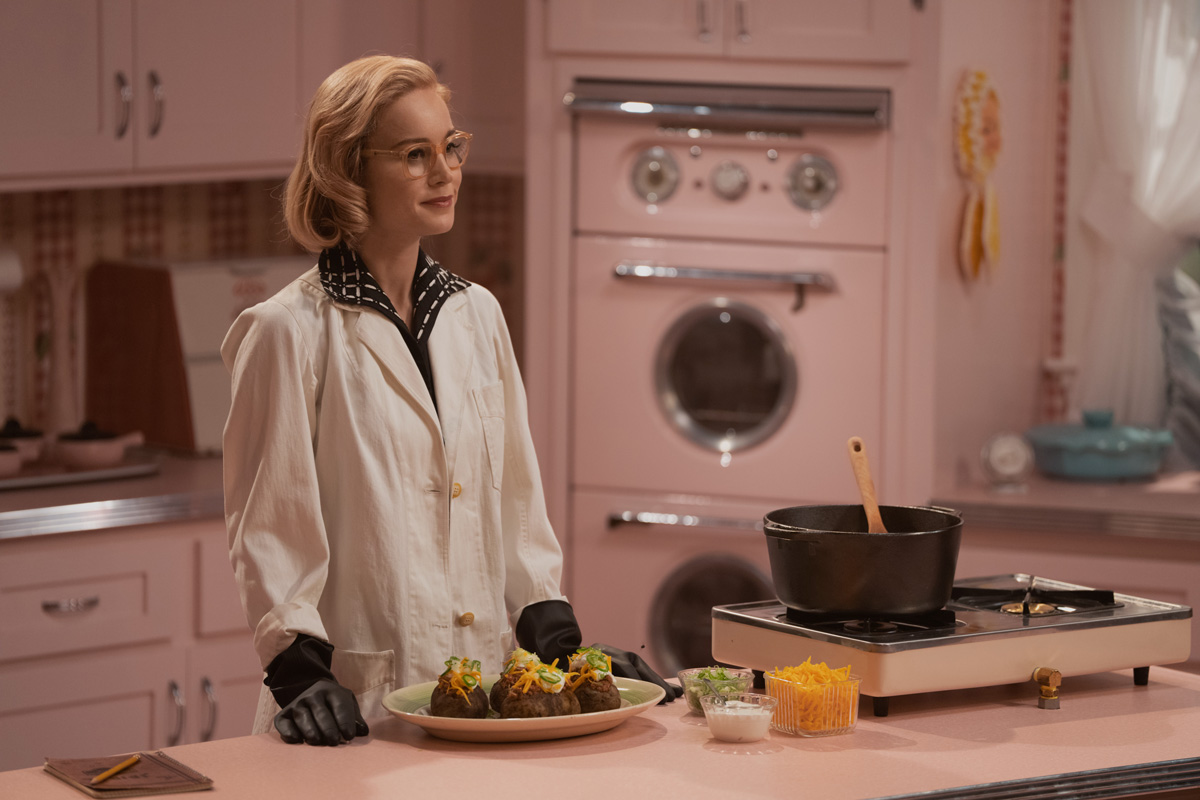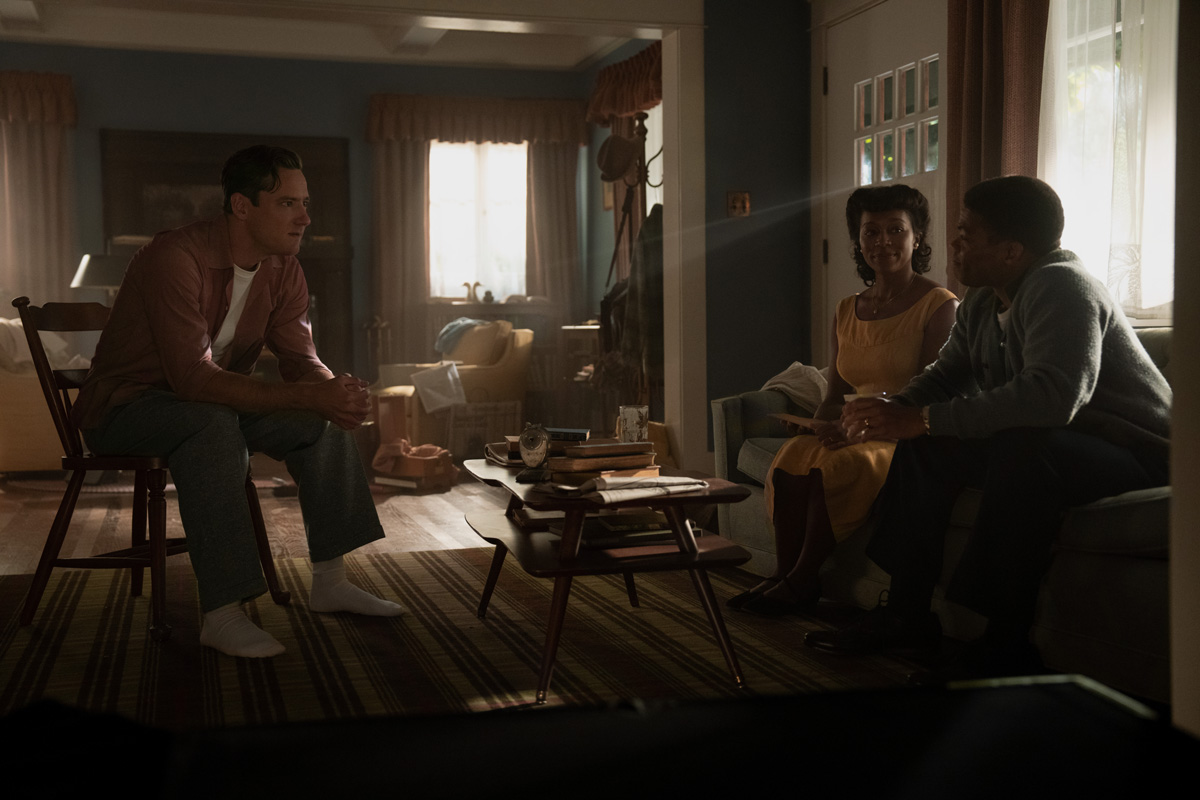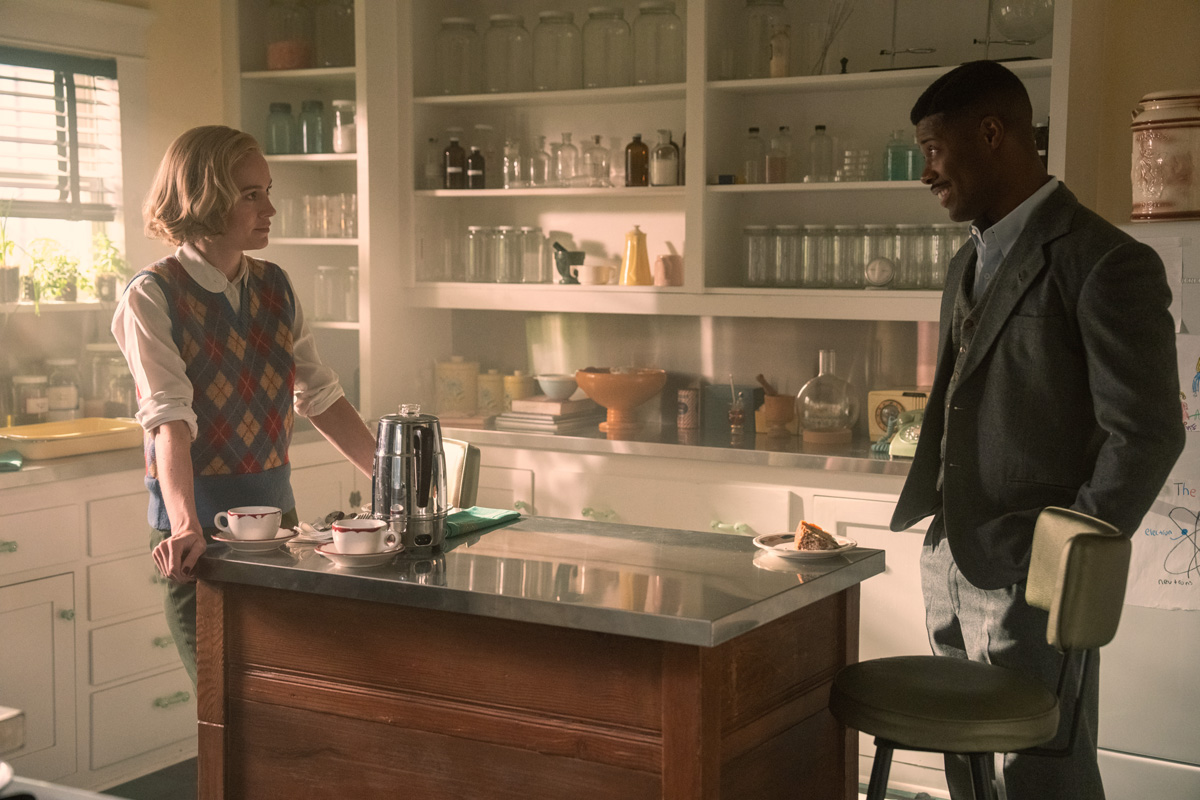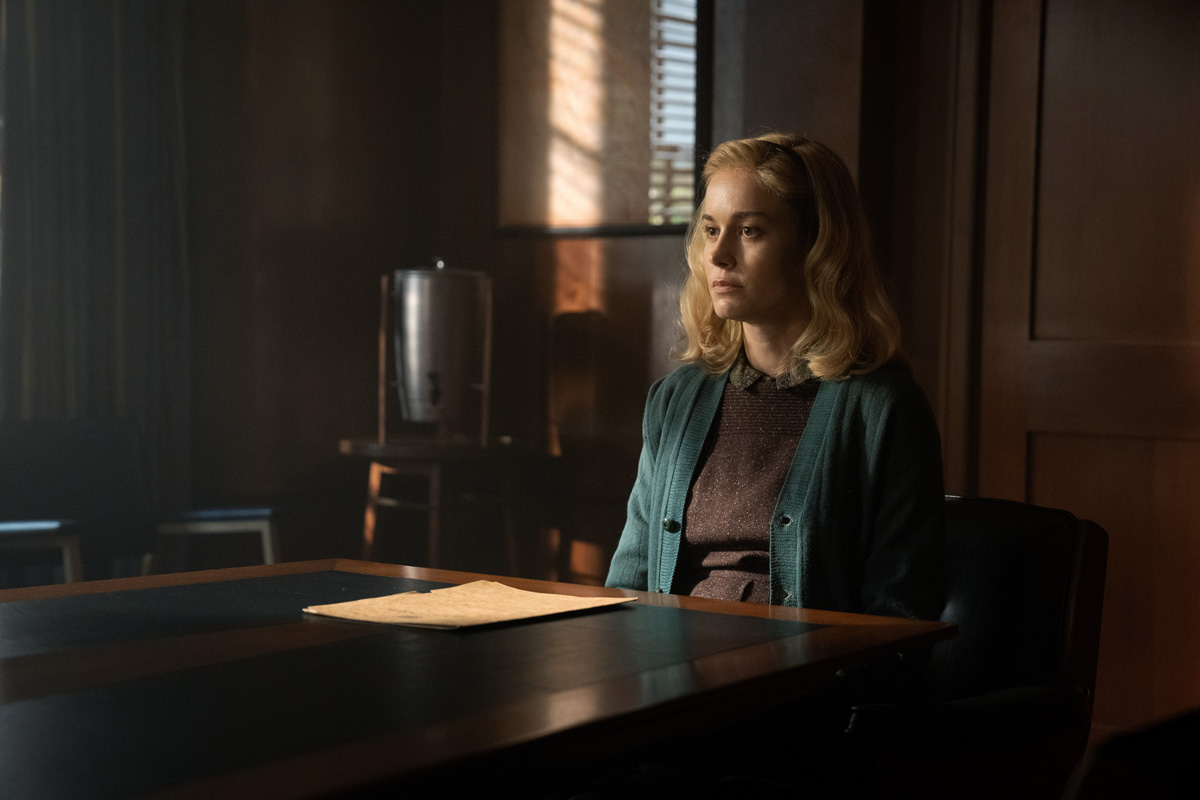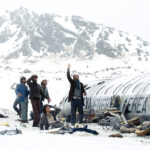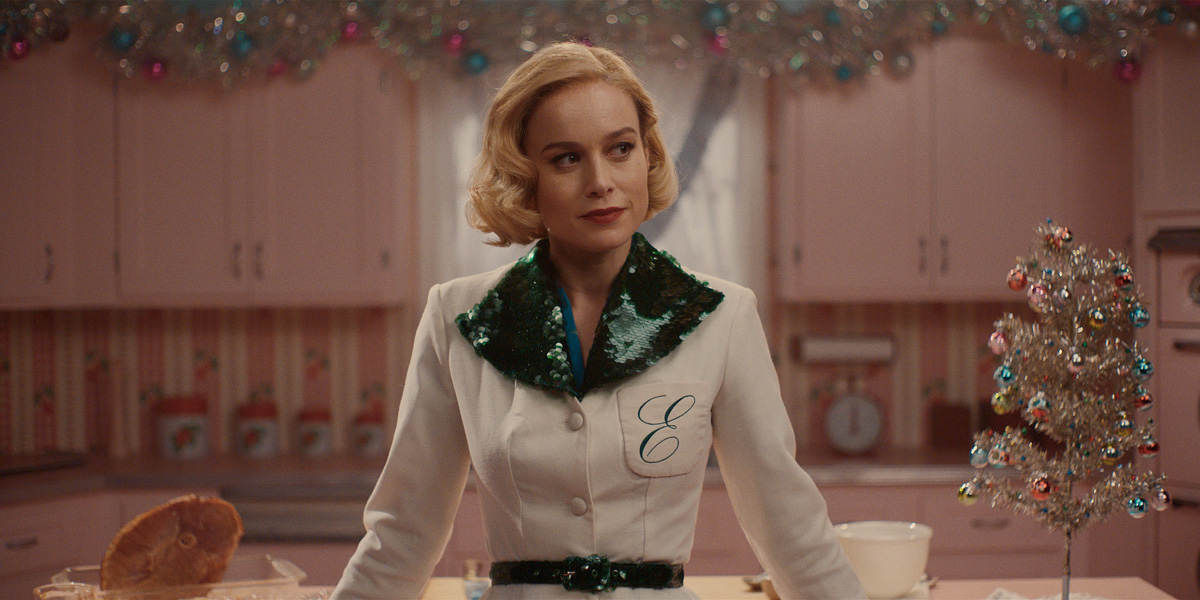
A recipe for success: Lessons in Chemistry
Posted on Jan 4, 2024 by Samara Husbands
Cinematographer Jason Oldak tells Nicola Foley about lensing the Apple TV+ adaptation of hit novel Lessons in Chemistry
Adapting Bonnie Garmus’ literary gem Lessons in Chemistry was always going to be a plum job. With its beautifully drawn period setting, swoony love story, whip-smart protagonist and tragic twist, it seemed destined for the prestige TV treatment from the very start.
Happily for the book’s many fans, Apple TV+ answered the call with an exquisite eight-parter that premiered on the streaming platform at the tail end of last year.
Lee Eisenberg (WeCrashed, Little America) served as showrunner, with Brie Larson in the starring role of Elizabeth Zott and Lewis Pullman as love interest Calvin Evans, while lensing responsibilities were shared between Zachary Galler (Paper Girls, Dr Death) and Jason Oldak (Good Girls, Unprisoned).
The plot follows Elizabeth, a brilliant chemist, as she rails against the stifling patriarchy of fifties USA, determined to be treated as an equal in a man’s world.
Dismissed from her lab job, she reluctantly steps into the limelight by hosting a TV cooking show, becoming a national treasure and teaching a generation of overlooked housewives much more than just recipes.
While Oldak’s CV leans heavily toward television projects, the cinematic allure of Lessons in Chemistry, with its distinct narrative arcs, captivated him. It felt, he describes, like making an ‘eight-part movie’.
Though he was aware of the book, he decided not to read it before shooting began.“As a cinematographer, it’s important to focus on the script that’s given to you and tell that story as best you can,” he muses. “The directors and I collaborated intensely to figure out the best way to bring it to screen. Now that it’s out there, we’ve had a great reaction from people who have read the book – but I couldn’t focus on that during shooting or it might have messed with the work.”
Oldak acted as cinematographer on episodes 3, 4, 7 and 8, and Zachary picked up the other four, with the two DOPs collaborating closely to ensure consistency throughout the series.
“We got along really well. From the beginning, we were talking about the visuals and sharing the images in our own personal lookbooks from our interviews. We soon realised we were kind of already on the same path,” he recalls.
“What’s so unique about this project is that each chapter feels like its own story. This meant, in each episode, we could go outside the box a little bit. Episode 3, for example, deals with so much grief and sadness – and it’s incredibly different from the first two episodes. That was my signature to make a distinct mark within the structure.”
In said instalment, which depicts Calvin’s death and Elizabeth’s struggles with grief and motherhood, Oldak deploys lighting to convey her emotional turmoil.
“It needed to feel like a departure from 1 and 2; I went quite far with where the light carried and where it didn’t. There’s a scene at the cemetery where we were dealing with overcast skies and a super soft light that went everywhere. But I wanted to shape it and have just a sliver of light. We used a tremendous amount of giant black rags and shaped their faces, so that it fit within the rest of the episode,” he comments.
“There’s also not a lot of dialogue in that episode; a lot is happening on her face, this anger and sadness,” he continues. “Throughout the whole show, it was important for us not to overly stylise anything. We tend to move the camera a lot, but in that episode, it was about the stillness and letting her perform.”
Oldak used an ARRI ALEXA Mini LF camera body teamed with Canon K35 lenses to enhance the vintage aesthetic.
“As a cinematographer, I feel like the lenses are your paintbrush,” he says. “We have a lot of work to do – but what is in front of the camera is also important: the costume design colours, the production design colours, all of that went hand in hand with the LUT we created, and our lenses. As an overall package, we got that look right.”
An undeniable star of the show is Elizabeth’s pet dog Six-Thirty, a rescued goldendoodle whose POV occasionally takes centre stage.
On witnessing Calvin’s death, we hear his internal monologue: “In that moment, everything I ever thought about myself, every worst fear I had, it all came true.”
The show goes on to portray Six-Thirty heartbreakingly grief-stricken alongside Elizabeth, eventually encouraging his owner to start running just as Calvin had loved to do. If there was an Academy Award for best supporting canine, it would surely belong to him.
Chuckling about working with animals, Oldak shares: “They always say never to work with animals or babies – and we had both in episodes 3 and 4!” Six-Thirty became a valued cast member, and meticulous efforts were made to capture his perspective.
Deploying an ARRI SRH-360 stabilised remote head on smooth floors, the team achieved seamless movement, ensuring his height and motions were authentic. They also utilised cranes in capturing the dog’s military training, allowing for dynamic shots without visible tracks.
Despite the challenges, the canine actor – barely a year old – delivered standout moments, including an unplanned but perfectly timed scene in which he comfortingly places his head on Elizabeth’s lap upon learning about her pregnancy. “That’s acting right there!” laughs Oldak.
A big set piece came with the sunrise rowing scene in episode 7, which shows Calvin powering through the water, bathed in celestial light. Tranquil to watch, Oldak reports that it was anything but to shoot.
“That day was insane! It was December in California, where the sun sets around 4pm, so we had limited time to capture all of our rowing work in 5, 7 and 8, plus some shots of the dock. We only had nine hours, so we had to be on our game,” he explains.
A 35ft crane was attached to a pontoon boat – emulating a car-to-car set-up – with the grip team all prepped on how to rig it. In addition to capturing the rowing, Oldak was mindful of how footage would synchronise with the VoiceOver of Reverend Wakely and Calvin’s epistolary exchange.
“It wasn’t just a montage of anything and everything – we were strategic in our mix of angles, placing the boat in the right way to get the sunlight on the right side. We went through the paths with the boat operator and figured out where the sun would be first of all. The stunt person did it a couple of times to run through the beats and then we brought Calvin in – I was constantly watching the clock and watching the sun, but we got it done!
“I’m extremely proud of the rowing work,” he concludes. “Right from the initial scripts, the rowing was one of the things I felt most touched by – just him on the water and the early sunrise. I feel like we really captured that.”
This story appears in the February 2024 issue of Definition.


